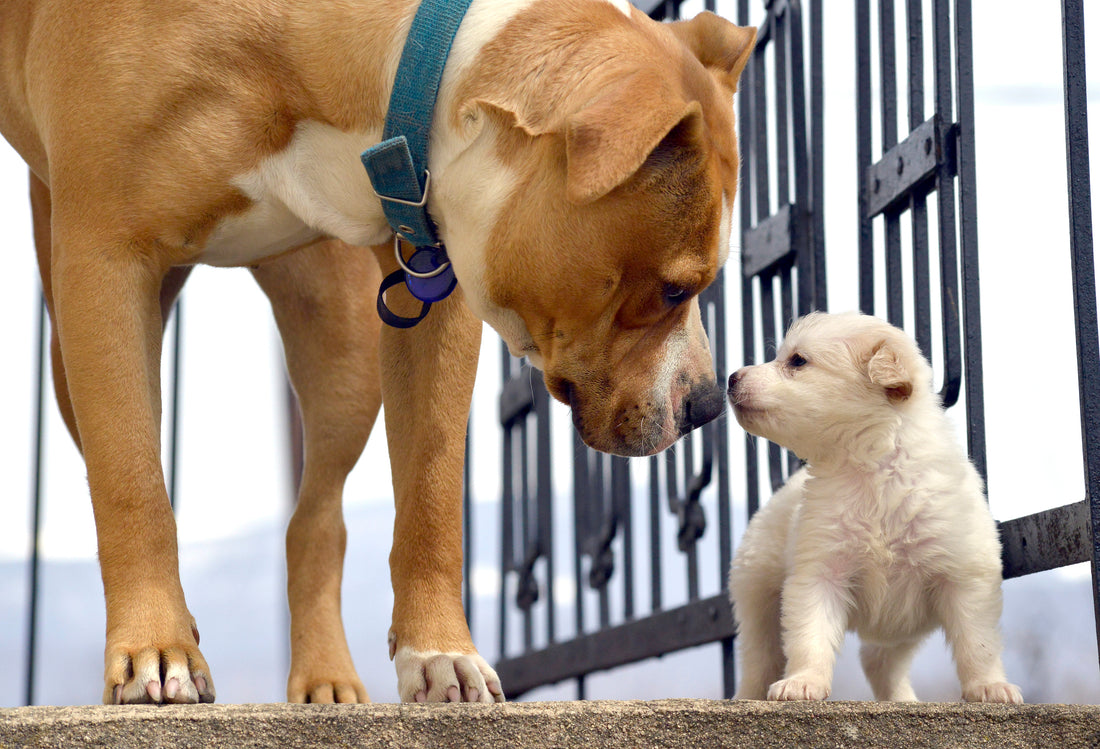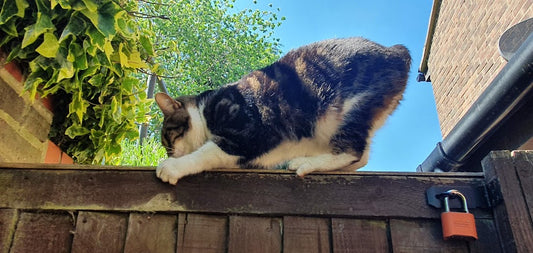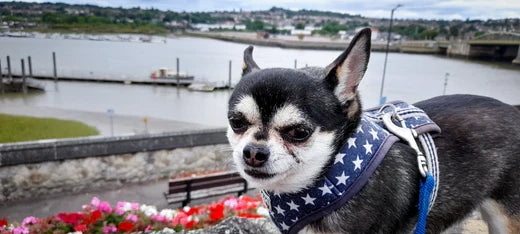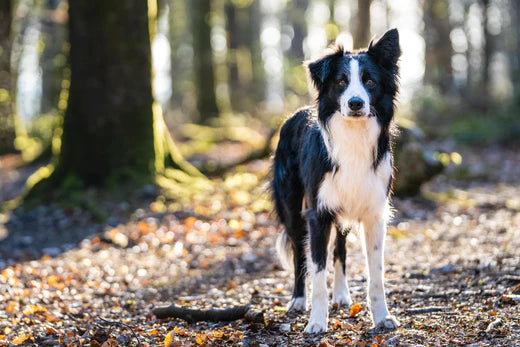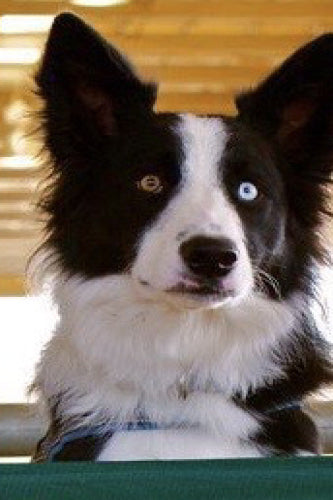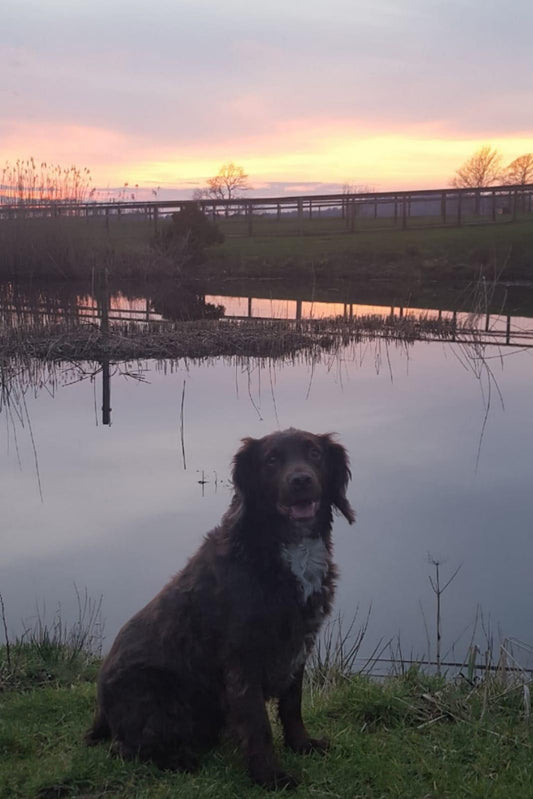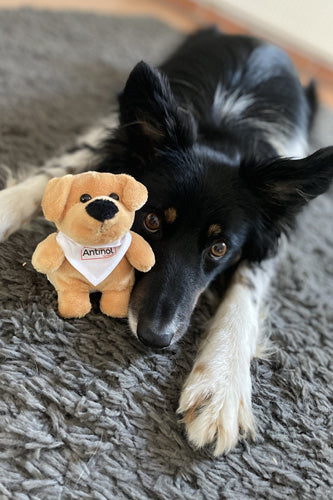“He’s cute and tiny now, but wait 12 months, and you’ll be buying a bigger sofa if you plan to have an afternoon nap with him - this little cuddle monster is going to turn into one giant bear of a dog…”
These were the words said to me by a Newfoundland breeder as I sat cross-legged in their playpen, rolling the adorable puppy Otto over and over in our playful game of getting to know each other. He was already the same size as a large teddy bear and double the size of my cat Noodle.
These words were said just as I was describing my envisioned future with Otto, Autumn afternoon, both of us back from a windy walk and cuddling up for having an afternoon nap in front of the fire. The breeder indulged me, nodding and smiling right up until I started describing our longer-term future together when Otto would be a fully grown Newfie.
As if to underscore the point she was making, Otto’s dad made an appearance. Quietly padding into the room up to the pen. Otto’s dad was quite simply the biggest dog I’ve ever seen. A 5 year old 70kg chocolate Newfie who had the world’s largest tail. In fact, as his tail swished with happiness on seeing his pups, the force of it against the back of my knees almost knocked me off my feet.
I can truthfully say that when I did my research about these sweet-natured, water loving canine bears, when the research mentioned ‘big dog’, I hadn’t fully understood quite how big, BIG DOG is.
Totally taken with Otto, I decided we belonged together, but admit to being woefully underprepared as over the course of the next year I watched my little bear become a giant, adorable bull in a china shop!
How our puppies grow and change over the course of the first year is incredible, and whilst I assumed they were all sort of the same, I discovered quickly this is not the case! Every breed has its own idiosyncrasies of growth and because I love nothing more than reading up on puppies, I thought you might enjoy it too:
The puppy stage, from 12 -18 months is a whirlwind of growth and discovery!
Forget your ‘1 human year equates to 7 dog years’, during the first two years of life, your pup is on an accelerated growth path - each human year equating to approximately 10.5 human years. So, when your pup hits the 2-year mark, you’ve got a 21-year-old on your hands! This is also breed dependent, a smaller breed will be “younger” for a more prolonged period of time and a large breed will be “older” sooner.
For every pup, the first 12 months are filled with countless milestones. For certain breeds, the changes they undergo internally, as well as the ones you visibly see, can be phenomenal. In some cases, incredibly hard to imagine when you’re holding a tiny, wriggling bundle of furry adorability. But these potential changes need to be considered up front when considering a dog for your home and household. (I say this as the previous owner of a small cottage, that quickly went from spacious and charming to cramped like a doll’s house once it contained a giant adult Newfie!)
So, whilst that adorable bundle of fur may tug at your heartstrings initially, it's essential to consider their potential for quite significant growth. To help navigate the world of puppy growth champions, here are some fascinating insights into the dogs that experience the most dramatic transformations in their first year. (If you consider some of the larger breeds can take up to 24 - 36 months to reach full maturity, the stats below are quite an eye-opener!)

Raising the Bar: Meet the Dogs with the Most Height Growth
As dogs mature, they naturally grow taller, but certain breeds may surpass even your wildest expectations in size!
English Springer Spaniels, for instance, undergo the most significant growth spurt during their first year, expanding by a staggering 317% compared to their puppy size. Meanwhile, if you're considering adding a Golden Retriever to your family, anticipate a growth increase of 267% during the same timeframe.
Likewise, Dobermans and Boxers also undergo substantial changes, with an average growth rate of 243%. A German Shepherd grows at a rate of 214% and a Yorkshire Terrier isn’t far behind coming in at 200% (imagine how small they are as puppies!).

Vs The Pint-Sized Pups: Those That Stay Super Cute
By contrast, some pups are a little slower at growing in height during this period. Border Collies experience only a modest 13% increase in height within the initial 12 months, transforming from adorable puppies into equally endearing and incredibly loyal lifelong companions. Similarly, breeds like Chihuahuas (60% increase), Poodles (grow 50% increase) and Pugs (grow 25% increase) exhibit slower growth rates.
AND don’t be fooled into thinking a smaller breed is going to cost you less than the bigger breeds in day to day life. Although the smaller pups may consume less food and occupy less living space, brachycephalic (flat-faced) breeds such as Pugs and French Bulldogs are at increased risk of serious health issues like respiratory problems and heart conditions leading to costly veterinary and supportive care. Factors that do need to be considered especially if you’re on a leaner pet-care and time budget.

The Heavy Hitters…. Dogs With Rapid Weight Gain!
As we know, a pup’s weight gain will be heavily influenced by their diet and exercise routines, but some breeds have an inherent DNA code that makes them pile on the pounds in those first 18 months.
Labradoodles, are quite phenomenal when it comes to weight gain, they tend to increase their body weight by a whopping 900% within the first year. Nine hundred percent.
Labrador Retrievers (700%), Rottweilers (692%), and Greyhounds (650%) aren’t far behind in their weight gain during the same period. Perhaps somewhat surprisingly, a Pug’s weight gain in their first year (600%), is greater percentage wise, than that of a Great Dane (534%). The one good thing for us humans is that with the exception of the Pug, to keep these breeds in tip top shape and avoid excess weight gain in the future, they (and by default us) have to keep up a solid daily exercise regime.

Lightweight Champions…Dogs That Stay Slim And Trim
Mini Cavapoos keep it light and sprightly, only increasing their weight by 50% increase in their first year. Chihuahuas, the pint-sized powerhouses, literally double their mass. Staffies beef up by 118%, while Yorkshire and Welsh Terriers tie the knot at 131% weight gain rate! The largest of the slim and trim being Dalmatians who only gain 147% of their weight in those first 12 months.

The Exercise Enthusiasts: The Dogs That Love to Walk + Play
When it comes to exercise needs, there's no one-size-fits-all for dogs. Some larger breeds have energy levels akin to horses, while others prefer a more leisurely pace. Meanwhile, smaller breeds vary from the lively sprinters to those who enjoy being carried around like royalty.
To put this into context, the most exercise-demanding dogs include Labradors, Alaskan Malamutes, Dalmatians, Border Collies, Boxers, Springer Spaniels, German Shepherds and Golden Retrievers.
If you’re not happy in wellies, come rain, sleet or snow, you might want to avoid those breeds in favour of Greyhounds (really surprising), French Bulldogs, Chihuahuas, Cavalier King Charles Spaniels, West Highland Terriers, Bernese Mountain Dogs, Yorkshire Terriers, and even Basset Hounds. However, all of these dogs would still require mental stimulation inside, if the weather isn’t playing fair outside.
So when you’re next thinking of getting a puppy, and you’re toying with the idea of a new breed, it’s definitely worth doing your homework when it comes to their adult:
- Height
- Weight
- Exercise
- Diet
- Health Conditions
Liz + Otto in the tiny cottage!

